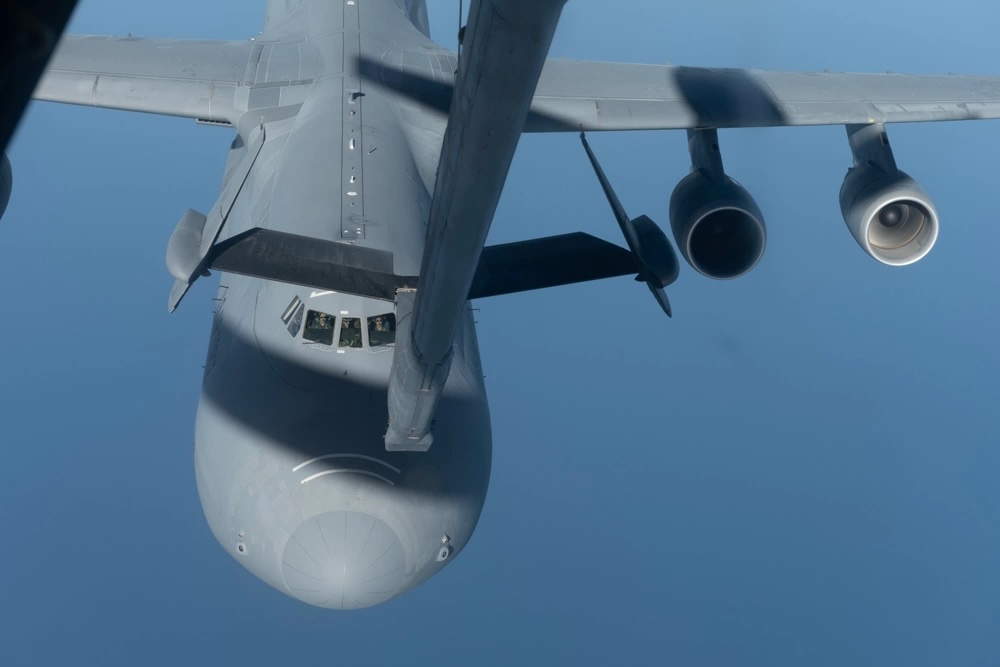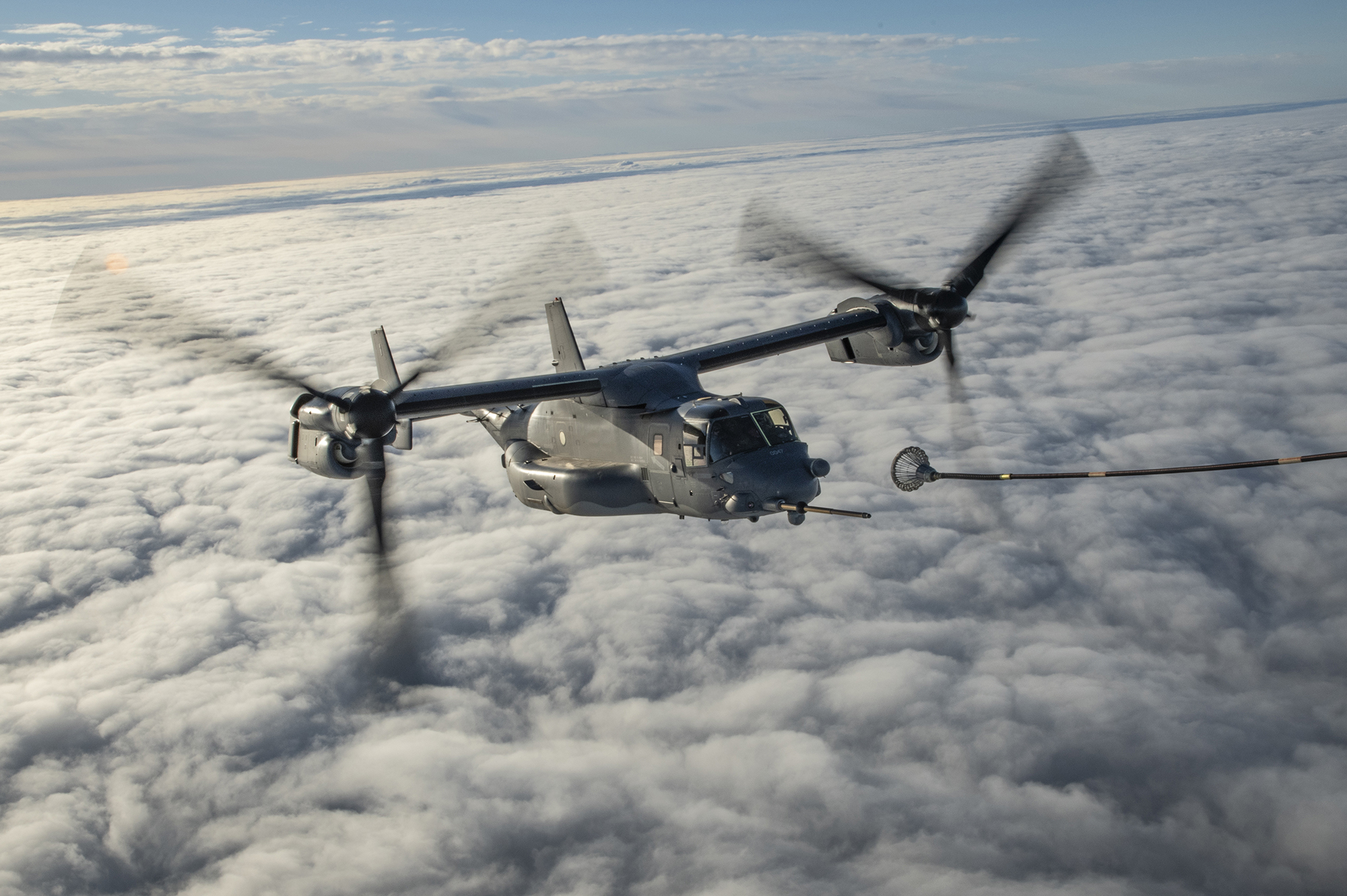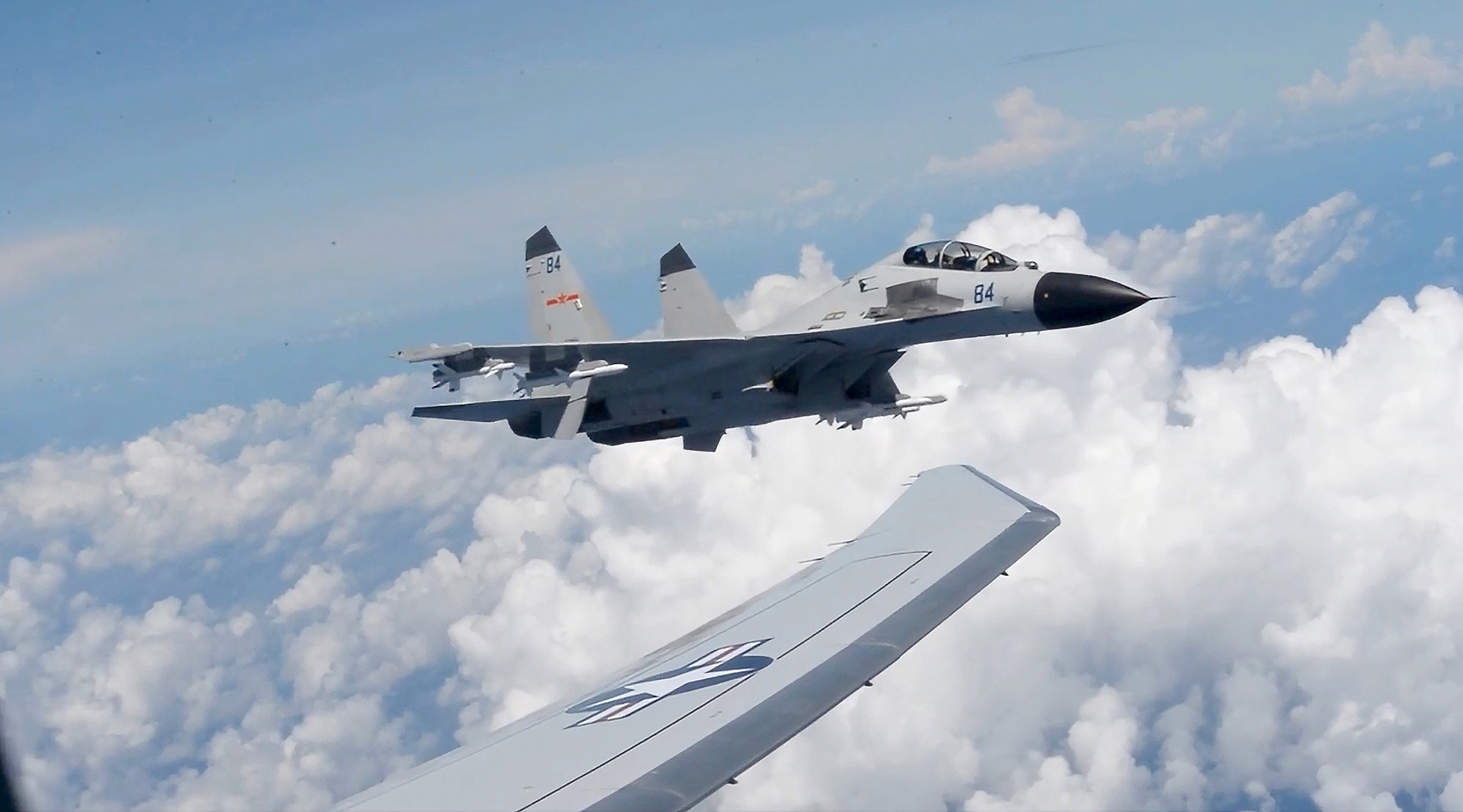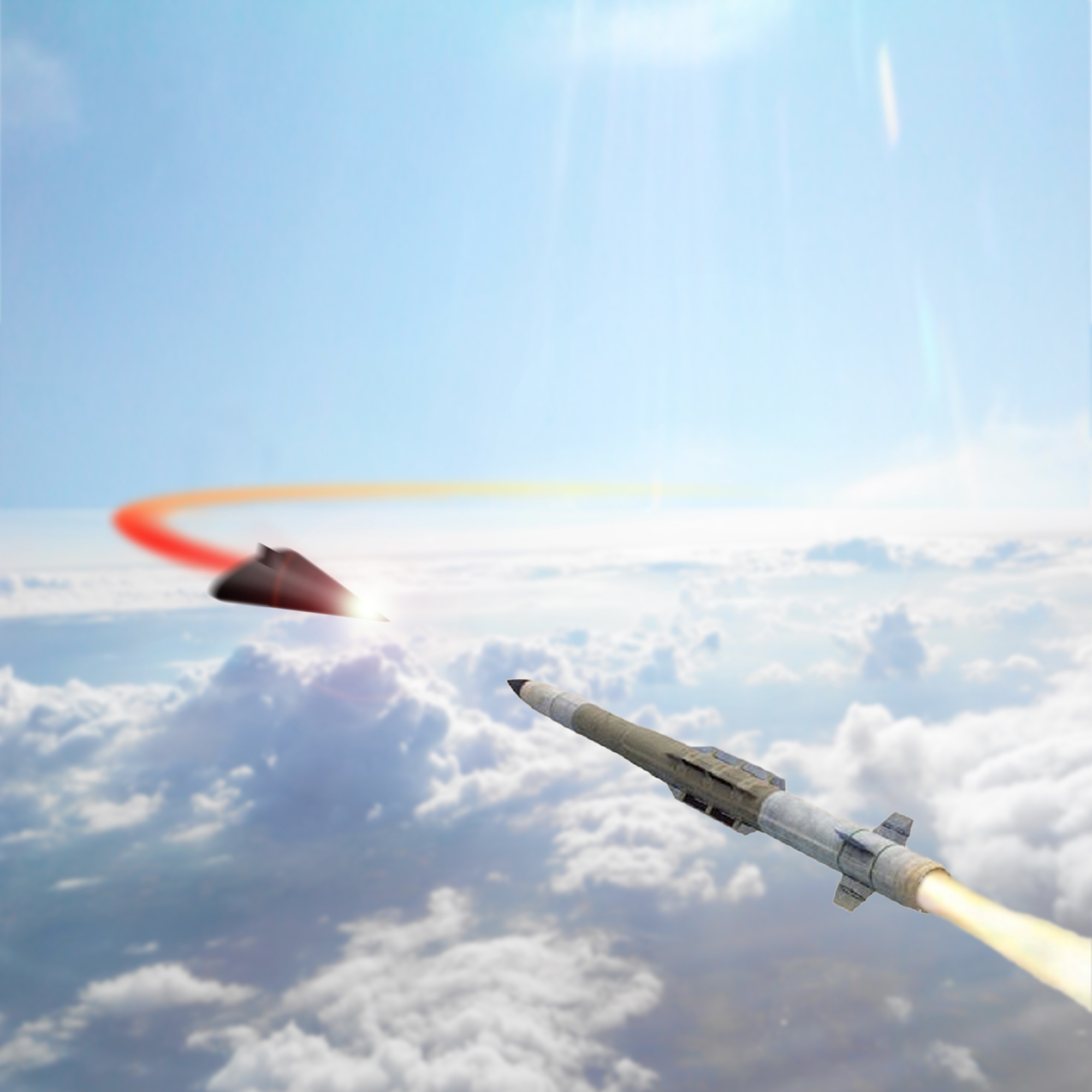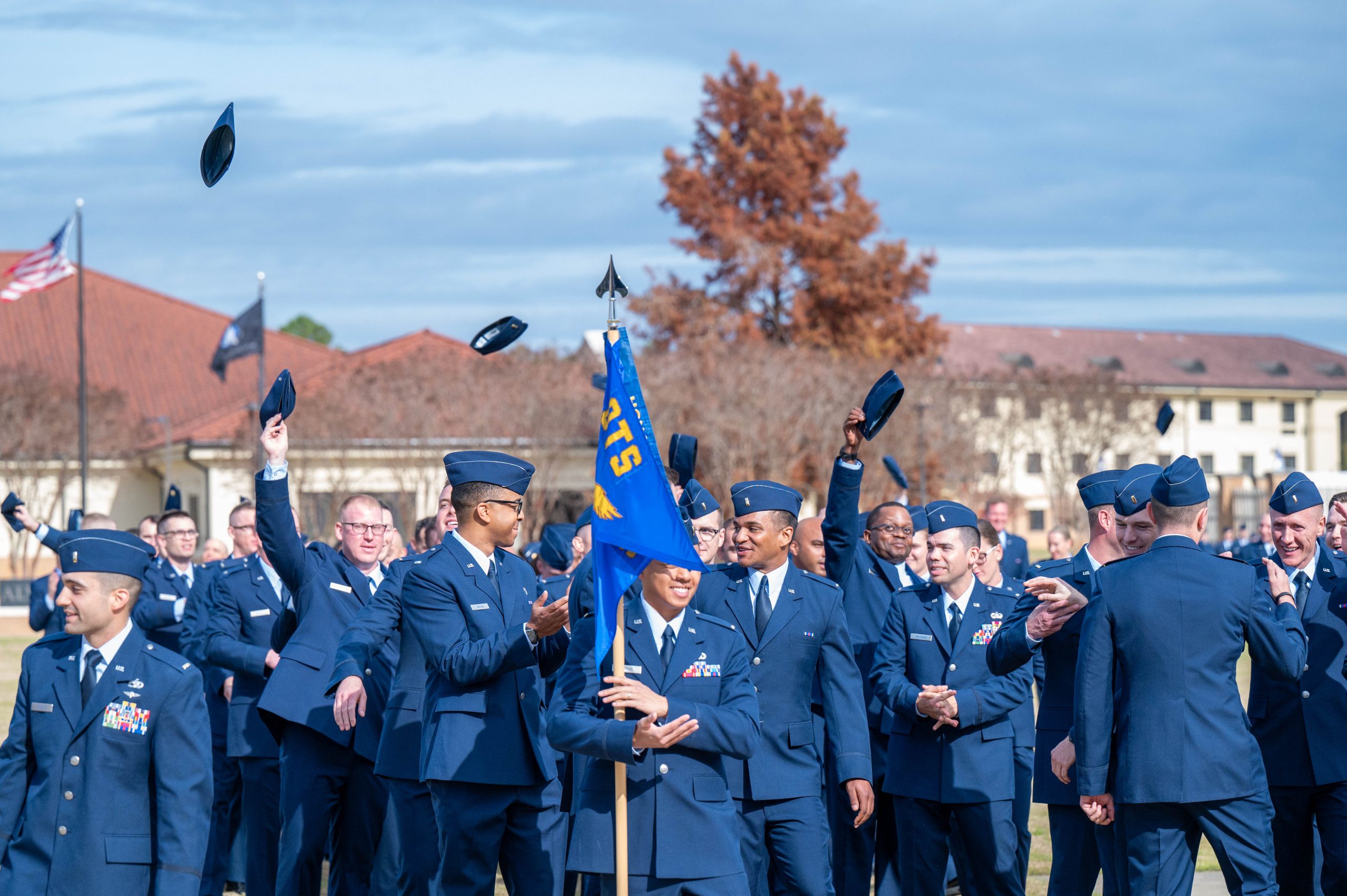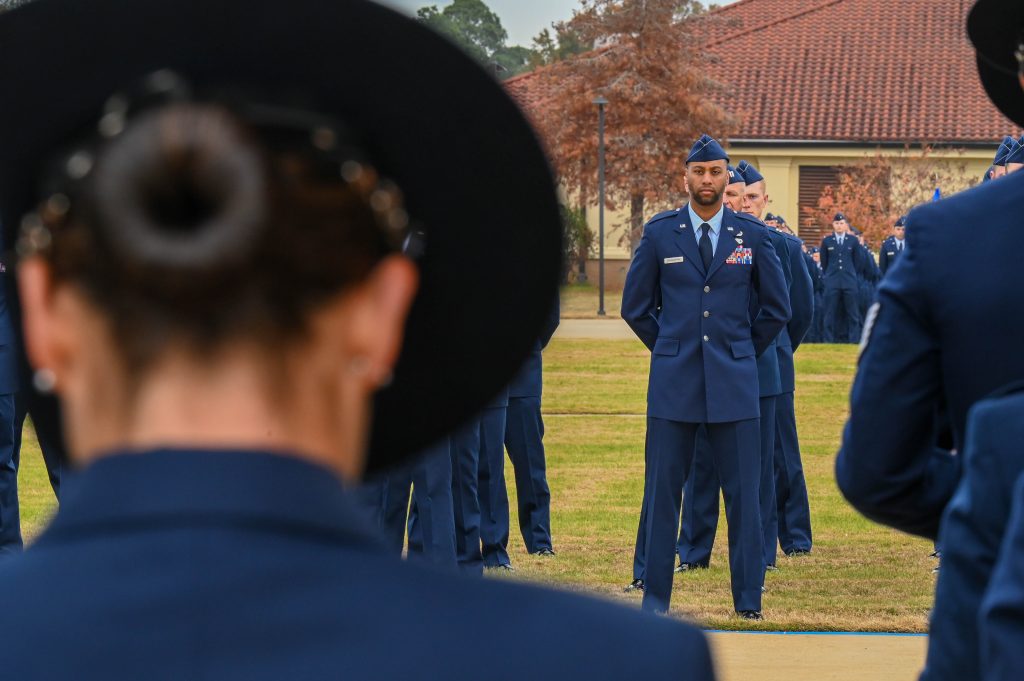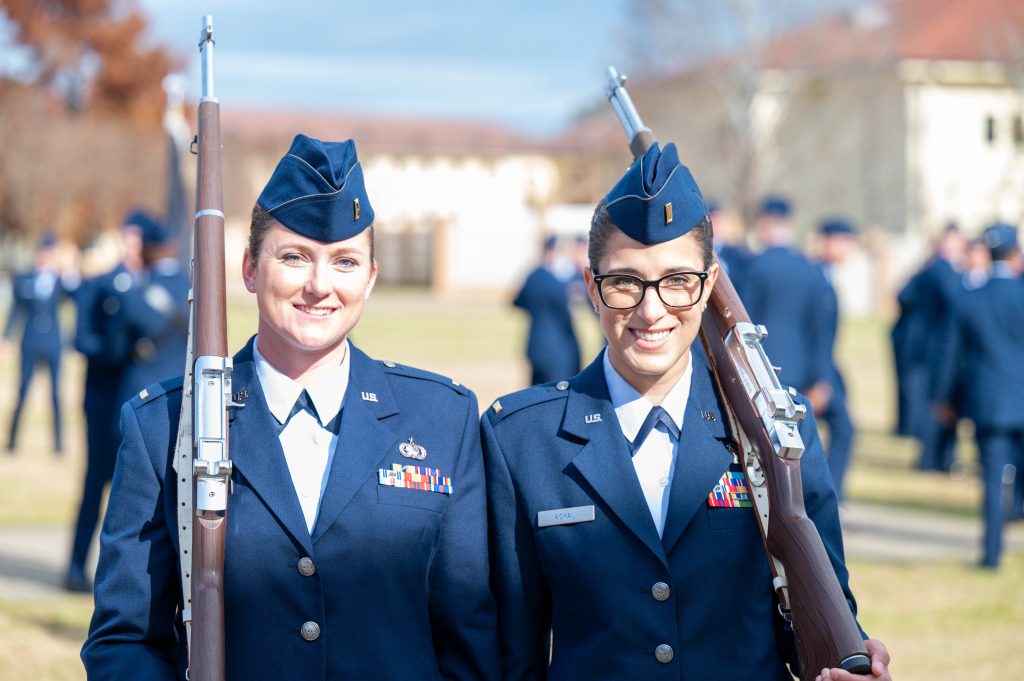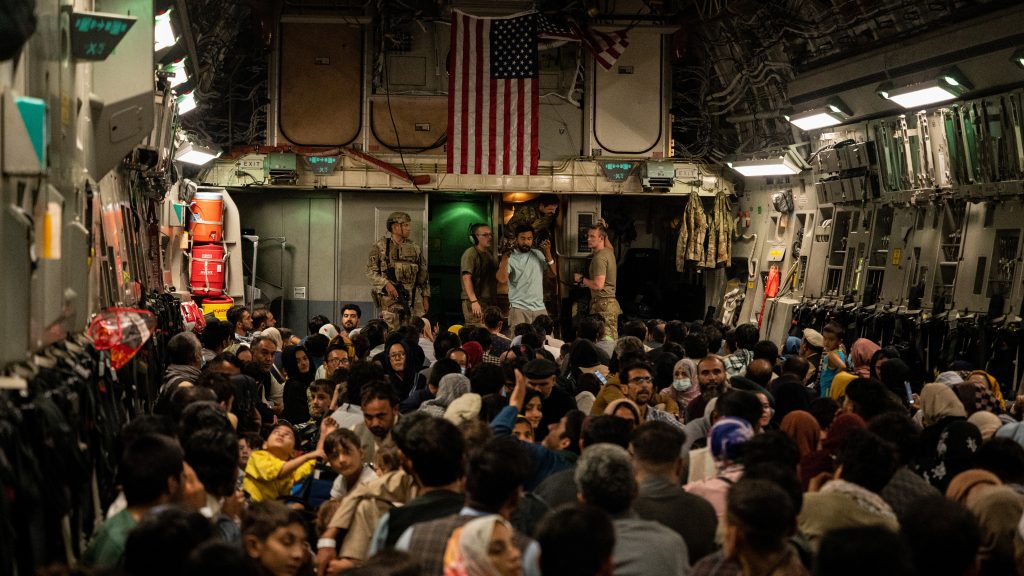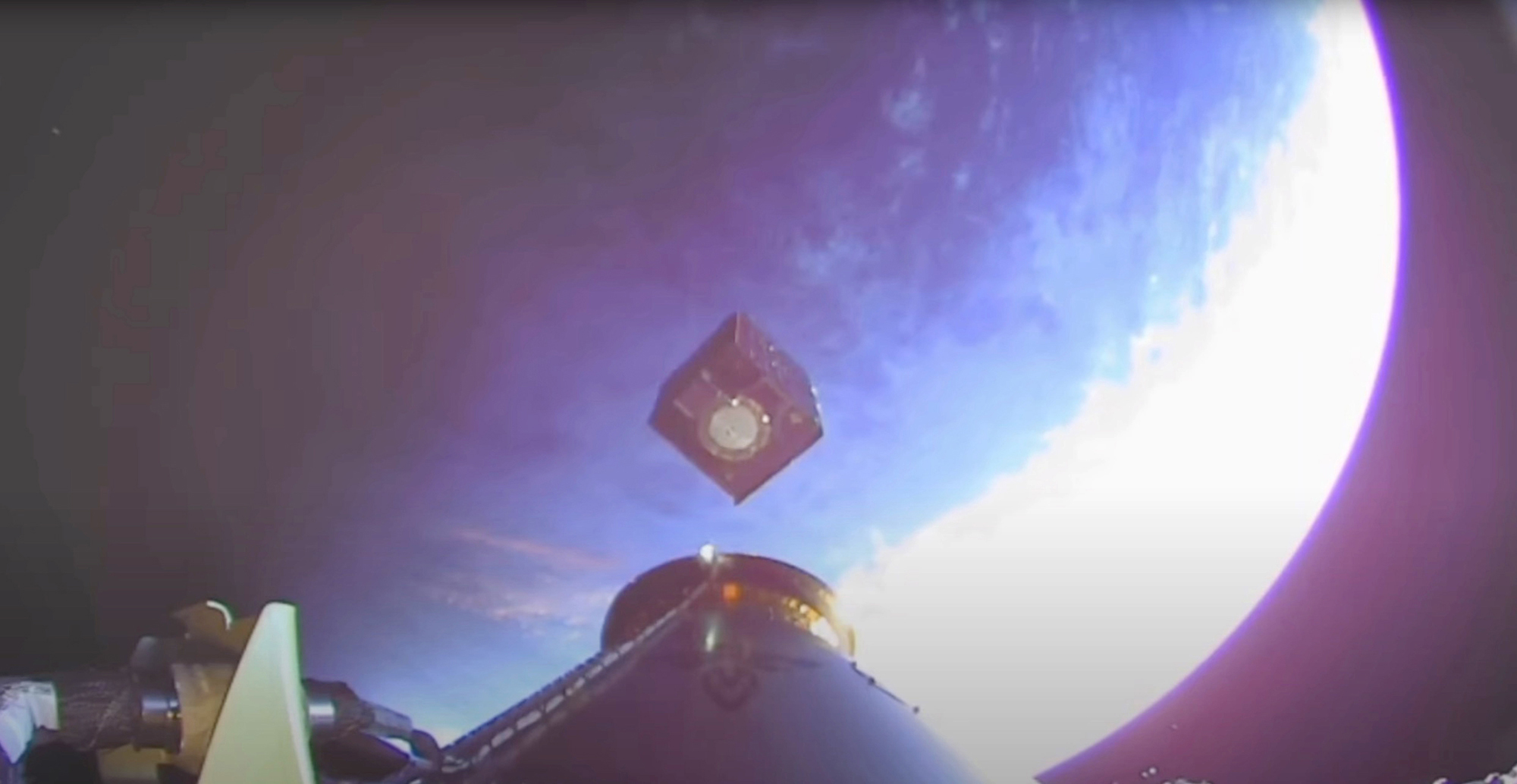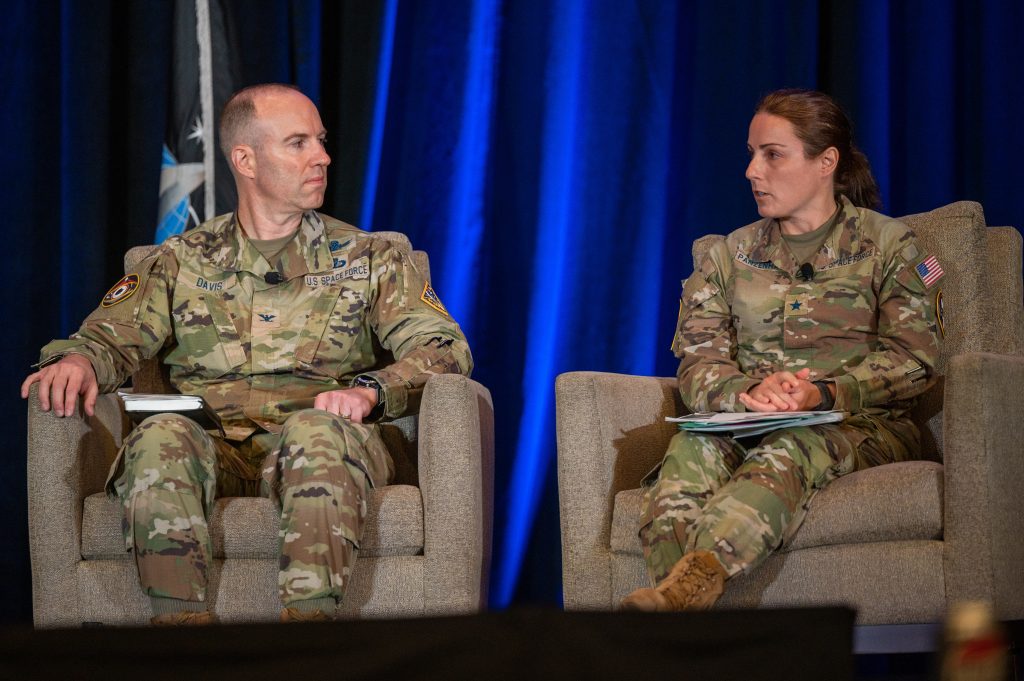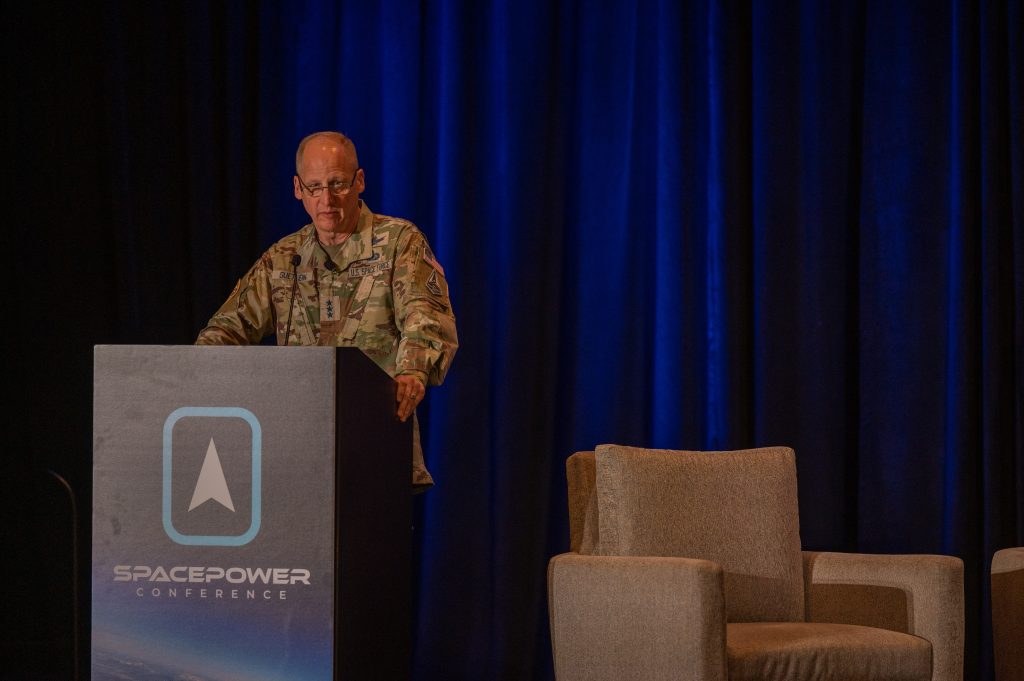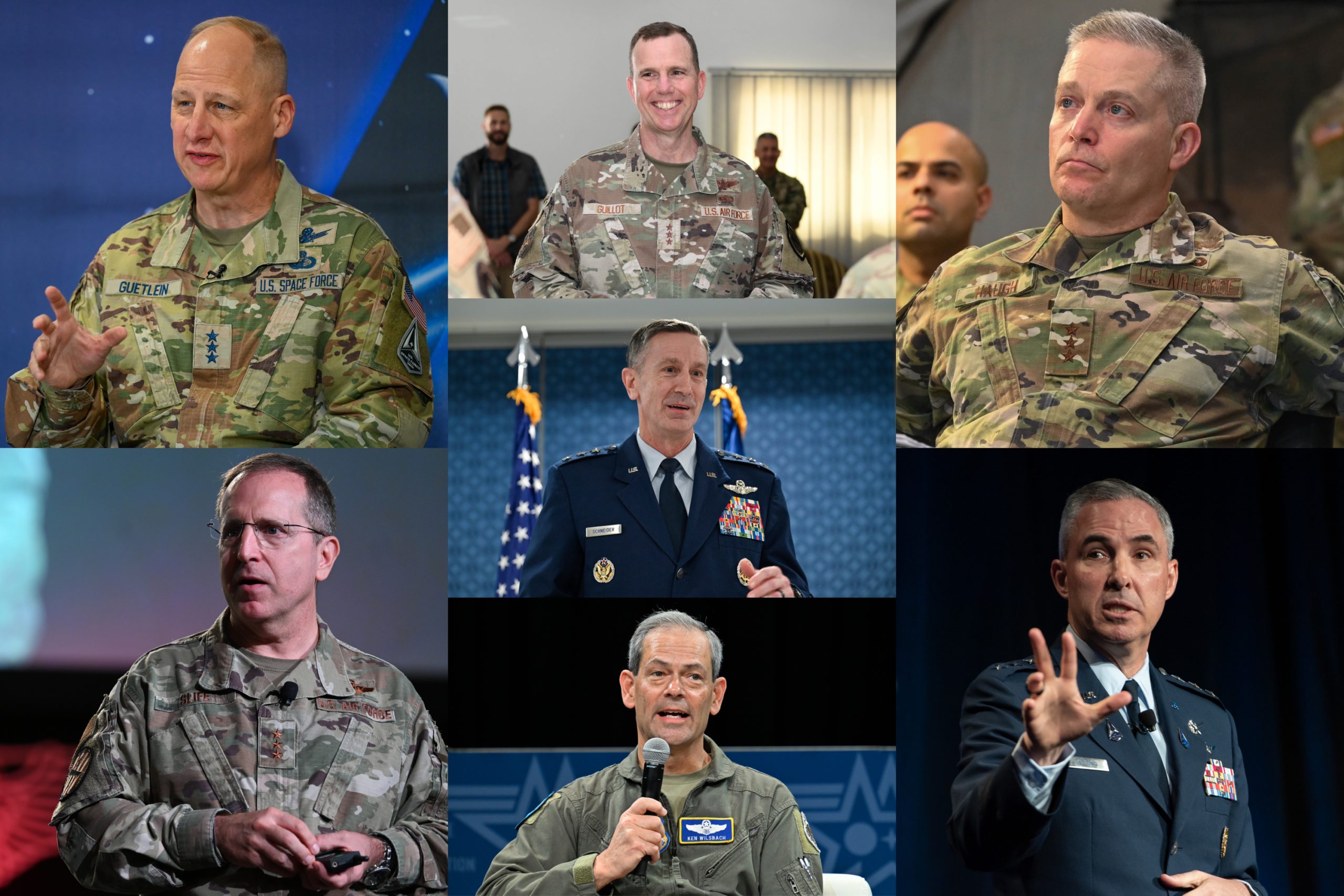At 247 feet long and with a 222-foot wingspan, the C-5M Super Galaxy is the largest aircraft in the U.S. military—and, as a crew at Travis Air Force Base recently proved in the skies over northern California and Oregon, America’s largest flying gas station.
On Dec. 12, a Travis crew tried out a process called reverse flow air refueling between a C-5 and a KC-10 Extender tanker. Instead of the gas flowing out of the tanker and into the receiving aircraft through the refueling boom as it usually does, the gas went up the other way from the C-5, through the boom and into the KC-10.
Normally reserved for emergencies, this was the first time the technique had been tried with the C-5 since the aircraft was first designed in the 1960s. Airmen with the 22nd Airlift Squadron wanted to see how it worked with the C-5M, the modernized version in use since 2006.
“The whole reason behind doing this was to get some baseline data,” Maj. Justin Wilson, the squadron’s chief of standards and evaluations and C-5M evaluator pilot, told Air & Space Forces Magazine. “Now we can see what other scenarios we can use this in.”
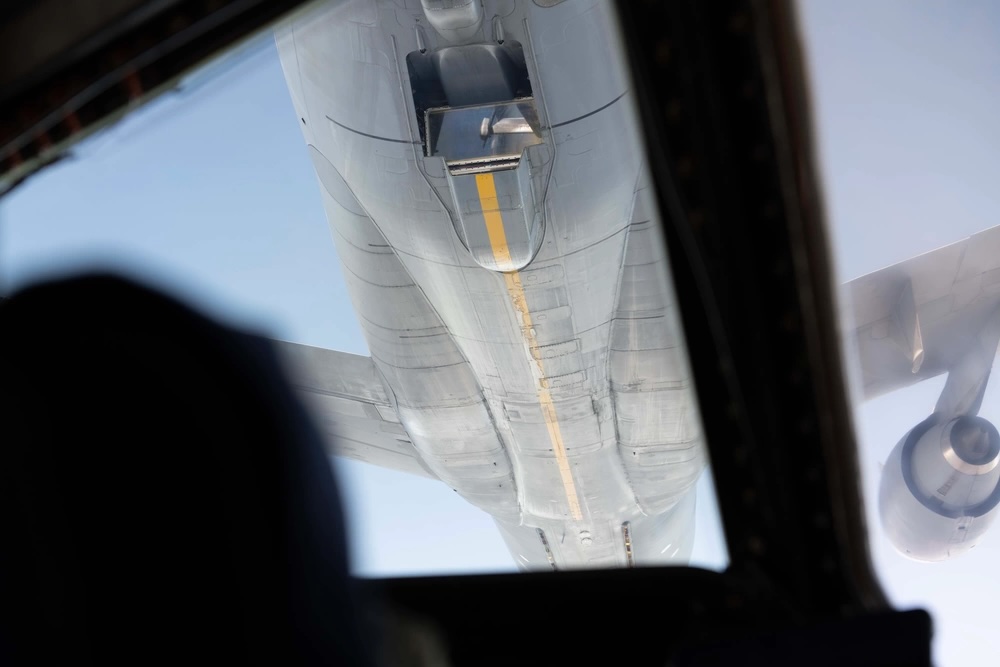
Air Force planners are preparing for a possible conflict against China, where the branch’s aerial refueling tankers would be hard-pressed to help the rest of the military’s aviation fleet cross the vast Pacific Ocean. If a C-5 can ferry gas to a tanker, it could keep more tankers in circulation, Wilson said.
“By using a C-5 as a huge floating gas station, it allows more tankers to be positioned for offloading to fighter or mobility aircraft, versus having to use one tanker to refuel another, which takes away a tanker asset from the mission,” he explained in a press release. “This allows more tanker aircraft in the theater and extends their range or orbit time.”
The operation was an unusual one for the crew, and especially for the flight engineers who run through the checklists and operate the fuel panel in order to push gas through the C-5’s various tanks. As gas moves through and leaves the aircraft, it shifts the jet’s center of gravity, which requires constant monitoring and communication with the flight deck. The center of gravity affects how to handle the jet, how efficiently it flies through the air, and other factors as the pilots work to keep the massive plane connected to the tanker.
Despite the challenges, the flight was a success, with the C-5 offloading 23,500 pounds of fuel (about the weight of two African elephants) in approximately 30 minutes. By comparison, a tanker can offload 6,000 to 7,000 pounds a minute depending on the aircraft, Wilson said. But the point was not to prove the C-5 is more efficient than a tanker. Instead, it was to prove the operation could be done, to see how much gas could be moved, and how quickly the C-5 could move it.
The KC-10 had to burn gas to stay in a refueling formation for 30 minutes, but overall the aircraft flew away with 15,000 more pounds of fuel than it had before. That would extend the tanker’s range by about an hour and a half to two hours, depending on what mission it is flying, Wilson said. Two hours may not sound like much, but it could make all the difference for a fighter pilot running low on fuel hundreds of miles from the nearest runway.
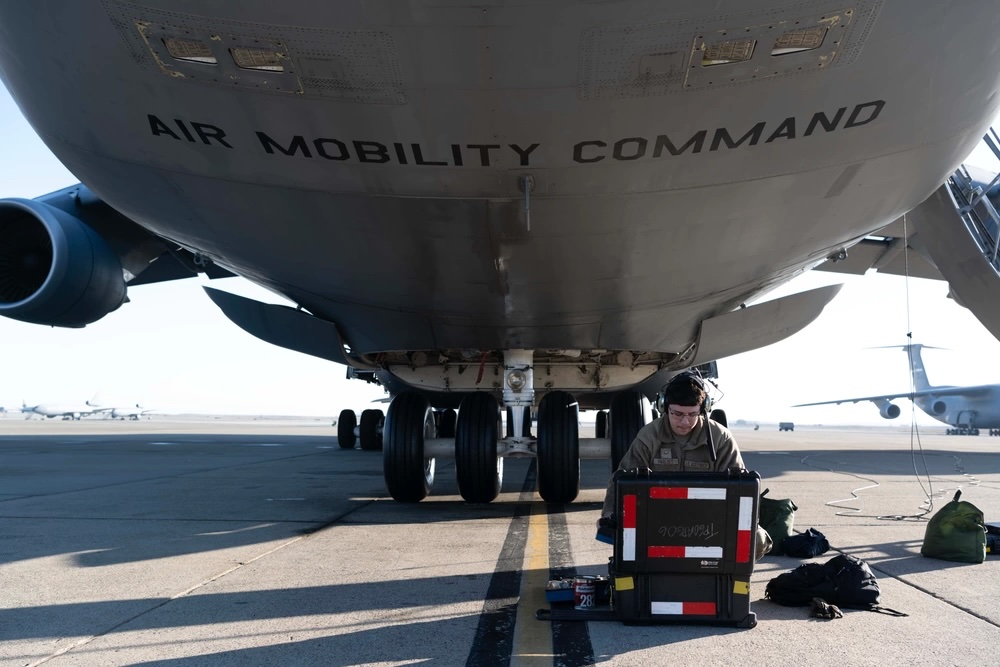
The reverse air flow refueling is the latest experiment using transport aircraft in unusual ways. Past flights have seen C-17 and C-130 transports launch cruise missiles out of their cargo compartments and haul gas to distant runways. The experiments are part of a larger effort by the Air Force to maximize the use of its fleet in a possible conflict. A C-17 could also move gas back to a tanker, Wilson said, albeit with less in its tanks than the larger C-5.
Now that the flight is over, future planners know what results they might expect to see if they ever have to use a C-5M to reverse flow air refuel in the future.
“It’s just one more thing that the C-5 is capable of doing,” Wilson said.
For Tech. Sgt. Robin Ogg, 60th Operations Group C-5M senior evaluator flight engineer, the flight also showed how flexible the crew could be to do something new.
“This mission on the C-5 meant showcasing precision, teamwork, flexibility, and adaptability,” he said in the release. “It highlighted the importance of trust and coordination within the team, emphasizing everyone’s crucial role. The experience left me with a deep sense of pride and accomplishment.”
